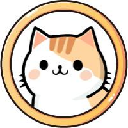-
 Bitcoin
Bitcoin $81,329.8543
-0.20% -
 Ethereum
Ethereum $1,552.3441
-2.28% -
 Tether USDt
Tether USDt $0.9994
-0.02% -
 XRP
XRP $1.9991
0.52% -
 BNB
BNB $579.5211
0.36% -
 Solana
Solana $116.5473
1.83% -
 USDC
USDC $0.9999
0.00% -
 Dogecoin
Dogecoin $0.1568
0.62% -
 TRON
TRON $0.2376
-0.55% -
 Cardano
Cardano $0.6261
1.28% -
 UNUS SED LEO
UNUS SED LEO $9.4122
0.25% -
 Chainlink
Chainlink $12.3737
0.58% -
 Avalanche
Avalanche $18.4700
2.63% -
 Toncoin
Toncoin $2.9319
-2.69% -
 Stellar
Stellar $0.2359
1.21% -
 Hedera
Hedera $0.1711
0.92% -
 Sui
Sui $2.1757
1.92% -
 Shiba Inu
Shiba Inu $0.0...01192
-0.08% -
 MANTRA
MANTRA $6.4645
-3.83% -
 Bitcoin Cash
Bitcoin Cash $299.0625
0.77% -
 Litecoin
Litecoin $75.7946
2.35% -
 Polkadot
Polkadot $3.4954
-1.31% -
 Dai
Dai $1.0001
0.00% -
 Bitget Token
Bitget Token $4.2456
-0.17% -
 Hyperliquid
Hyperliquid $15.2152
10.02% -
 Ethena USDe
Ethena USDe $0.9986
-0.03% -
 Pi
Pi $0.6017
1.73% -
 Monero
Monero $202.7948
-0.29% -
 Uniswap
Uniswap $5.1427
-0.87% -
 OKB
OKB $53.3154
-0.37%
Why can NFT be used to sell game props?
NFTs revolutionize gaming by allowing true ownership and trading of unique in-game items, creating new revenue streams for gamers and developers through blockchain technology.
Apr 05, 2025 at 04:21 am
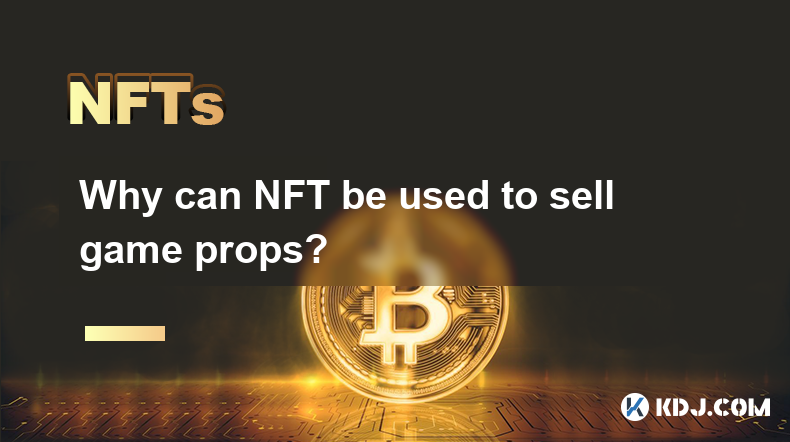
NFTs, or Non-Fungible Tokens, have revolutionized the way digital assets are owned and traded, particularly in the gaming industry. NFTs allow game props to be tokenized, making them unique and verifiable on the blockchain. This technology enables gamers to truly own, buy, and sell in-game items, which were previously controlled by game developers. By using NFTs, game props can be sold as unique digital assets, providing a new revenue stream for gamers and developers alike. This article explores the reasons behind the suitability of NFTs for selling game props, detailing the technology, benefits, and real-world applications.
What are NFTs and How Do They Work?
NFTs are cryptographic tokens on a blockchain that represent ownership of a unique item or piece of content. Unlike cryptocurrencies like Bitcoin or Ethereum, which are fungible and can be exchanged on a one-to-one basis, NFTs are unique and cannot be exchanged on a like-for-like basis. Each NFT contains distinct information that makes it different from any other token. This uniqueness is what makes NFTs ideal for representing game props, as each item can be individually tracked and owned.
- Blockchain Technology: NFTs are built on blockchain technology, which ensures the security and transparency of transactions. Each transaction involving an NFT is recorded on the blockchain, providing a clear history of ownership and transfer.
- Smart Contracts: NFTs often use smart contracts, which are self-executing contracts with the terms directly written into code. These contracts automatically enforce the rules of ownership and transfer, making the process seamless and trustworthy.
- Metadata: Each NFT contains metadata that describes the asset it represents. This can include details like the name, description, and even images or videos associated with the game prop.
Why are NFTs Suitable for Game Props?
NFTs are particularly well-suited for selling game props due to their unique characteristics and the benefits they offer to both gamers and developers. Here are some key reasons why NFTs are ideal for this purpose:
- True Ownership: NFTs allow gamers to have true ownership of their in-game items. Unlike traditional game props, which are often controlled by the game's developers, NFTs give players full control over their assets. They can buy, sell, or trade these items as they see fit.
- Scarcity and Value: NFTs can be designed to be scarce, increasing their value. For example, a game developer can create a limited number of a particular item, making it more valuable due to its rarity. This scarcity can drive demand and create a vibrant marketplace for game props.
- Interoperability: NFTs can be used across different games and platforms, as long as they are built on the same blockchain. This interoperability allows gamers to use their props in multiple games, increasing their utility and value.
- Monetization Opportunities: Both gamers and developers can benefit from the monetization of game props. Gamers can sell their items for real money, while developers can earn a percentage of each transaction as a royalty.
Benefits of Using NFTs for Game Props
The use of NFTs for selling game props offers numerous benefits to all stakeholders involved. Here are some of the key advantages:
- Empowerment of Gamers: Gamers are empowered to own, control, and monetize their in-game assets. This can lead to a more engaged and loyal player base, as players feel a greater sense of ownership over their gaming experience.
- New Revenue Streams for Developers: Developers can create new revenue streams by selling NFTs directly to players or by taking a cut of secondary market sales. This can be particularly beneficial for indie developers who may not have large budgets for traditional monetization strategies.
- Increased Engagement and Retention: The ability to buy, sell, and trade game props can increase player engagement and retention. Players are more likely to stay active in a game if they can earn real money from their in-game activities.
- Transparency and Security: The use of blockchain technology ensures that all transactions are transparent and secure. Players can trust that their assets are safe and that the rules of ownership and transfer are enforced.
Real-World Applications of NFTs in Gaming
Several games have already successfully implemented NFTs to sell game props, demonstrating the practical applications of this technology. Here are a few notable examples:
- CryptoKitties: One of the earliest and most famous examples of NFTs in gaming, CryptoKitties allows players to buy, sell, and breed unique digital cats. Each cat is represented by an NFT, and their uniqueness drives their value in the marketplace.
- Axie Infinity: Axie Infinity is a game where players collect, breed, and battle creatures called Axies. Each Axie is an NFT, and players can earn cryptocurrency by playing the game and selling their Axies on the marketplace.
- Decentraland: Decentraland is a virtual world where players can buy, sell, and develop land parcels, all represented by NFTs. The game also features in-game items and wearables that can be traded as NFTs.
- Gods Unchained: Gods Unchained is a trading card game where each card is an NFT. Players can buy, sell, and trade these cards, creating a vibrant secondary market for in-game assets.
Challenges and Considerations
While NFTs offer many benefits for selling game props, there are also challenges and considerations that need to be addressed. Here are some of the key issues:
- Environmental Impact: The energy consumption associated with blockchain transactions, particularly on networks like Ethereum, has raised concerns about the environmental impact of NFTs. Developers are exploring more eco-friendly blockchain solutions to mitigate this issue.
- Regulatory Uncertainty: The regulatory landscape for NFTs is still evolving, and there may be legal and compliance issues that need to be addressed. Game developers need to stay informed about the regulations in their jurisdictions to ensure they are operating within the law.
- User Experience: The technical complexity of NFTs can be a barrier to adoption for some users. Developers need to ensure that the process of buying, selling, and trading NFTs is user-friendly and accessible to all players.
- Market Volatility: The value of NFTs can be highly volatile, which can impact the stability of in-game economies. Developers need to carefully manage the supply and demand of their NFTs to maintain a healthy marketplace.
The Future of NFTs in Gaming
The use of NFTs for selling game props is still in its early stages, but the potential is enormous. As the technology matures and more games adopt NFTs, we can expect to see even more innovative applications and benefits. Here are some potential future developments:
- Cross-Platform Integration: As more games and platforms adopt NFTs, we may see increased cross-platform integration, allowing players to use their assets across multiple games and ecosystems.
- Enhanced In-Game Economies: NFTs can help create more dynamic and player-driven in-game economies. By allowing players to truly own and trade their assets, games can foster vibrant marketplaces and new forms of player interaction.
- New Game Genres: The use of NFTs may lead to the development of new game genres that are specifically designed to leverage the benefits of blockchain technology. These games could offer unique gameplay mechanics and monetization models.
- Increased Mainstream Adoption: As the technology becomes more user-friendly and the benefits become more widely understood, we can expect to see increased mainstream adoption of NFTs in gaming. This could lead to a broader acceptance of blockchain technology in the gaming industry and beyond.
Frequently Asked Questions
Q: What exactly is an NFT?
A: An NFT, or Non-Fungible Token, is a unique digital asset that is stored on a blockchain. Unlike cryptocurrencies, which are fungible and can be exchanged on a one-to-one basis, NFTs are unique and cannot be exchanged like-for-like. Each NFT contains distinct information that makes it different from any other token.
Q: How can NFTs be used to sell game props?
A: NFTs can be used to sell game props by tokenizing these items on a blockchain. Each game prop is represented by a unique NFT, which can be bought, sold, or traded by players. This allows gamers to truly own their in-game items and provides a new revenue stream for both gamers and developers.
Q: What are the benefits of using NFTs for game props?
A: The benefits of using NFTs for game props include true ownership for players, the ability to create scarcity and value, interoperability across different games and platforms, and new monetization opportunities for both gamers and developers. NFTs can also increase player engagement and retention by allowing players to earn real money from their in-game activities.
Q: Can you give examples of games that use NFTs for game props?
A: Yes, several games have successfully implemented NFTs for game props. Examples include CryptoKitties, where players can buy, sell, and breed unique digital cats; Axie Infinity, where players collect, breed, and battle creatures called Axies; Decentraland, a virtual world where players can buy, sell, and develop land parcels; and Gods Unchained, a trading card game where each card is an NFT.
Q: What are the challenges and considerations when using NFTs for game props?
A: Some of the challenges and considerations include the environmental impact of blockchain transactions, regulatory uncertainty, the technical complexity and user experience of NFTs, and market volatility. Developers need to address these issues to ensure the successful implementation of NFTs in their games.
Q: What is the future of NFTs in gaming?
A: The future of NFTs in gaming looks promising, with potential developments including increased cross-platform integration, enhanced in-game economies, the development of new game genres, and increased mainstream adoption. As the technology matures, we can expect to see more innovative applications and benefits for both gamers and developers.
Disclaimer:info@kdj.com
The information provided is not trading advice. kdj.com does not assume any responsibility for any investments made based on the information provided in this article. Cryptocurrencies are highly volatile and it is highly recommended that you invest with caution after thorough research!
If you believe that the content used on this website infringes your copyright, please contact us immediately (info@kdj.com) and we will delete it promptly.
- title: New Hampshire and Florida Are Pushing Forward With Plans to Hold Bitcoin as Part of Their State Reserves
- 2025-04-11 15:10:12
- AVAX Eyes Breakout to $60 as Market Heats Up
- 2025-04-11 15:05:13
- Binance Launches LDUSDT, Its Newest Yield-Bearing Margin Asset
- 2025-04-11 15:05:13
- Summary of key points
- 2025-04-11 14:50:12
- Bitcoin's Recovery to $83,000 Has Sparked Excitement Across the Crypto Markets
- 2025-04-11 14:40:12
- Block Inc., the parent company of Cash App and led by Jack Dorsey, has been fined $40 million
- 2025-04-11 14:30:13
Related knowledge
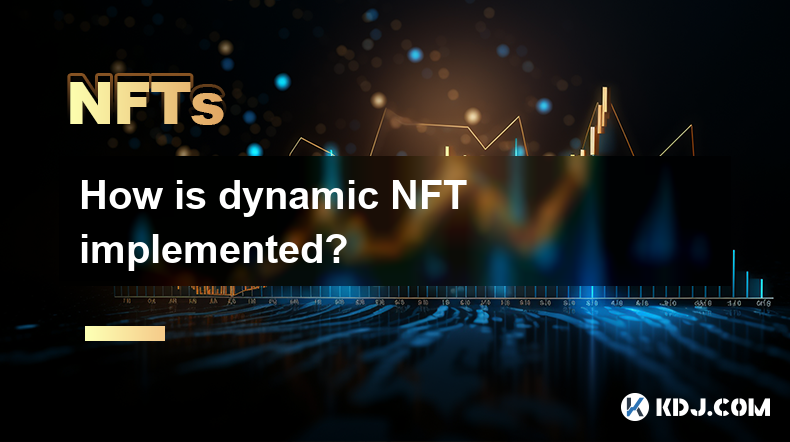
How is dynamic NFT implemented?
Apr 11,2025 at 04:56am
Dynamic NFTs, or dNFTs, represent a fascinating evolution in the world of non-fungible tokens. Unlike static NFTs, which remain unchanged once minted, dynamic NFTs can evolve, change, or update based on certain conditions or external data. This article will delve into the implementation of dynamic NFTs, exploring the technologies and processes involved ...
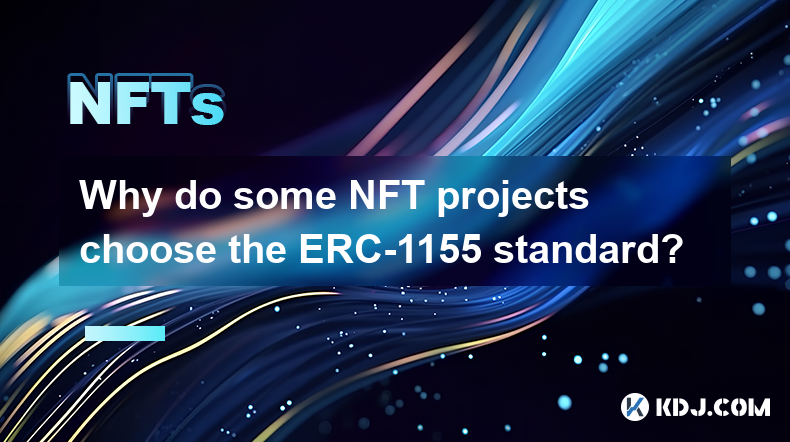
Why do some NFT projects choose the ERC-1155 standard?
Apr 08,2025 at 11:49am
The world of Non-Fungible Tokens (NFTs) has seen a significant rise in popularity and innovation, leading to the development of various token standards. Among these, the ERC-1155 standard has emerged as a versatile and efficient choice for many NFT projects. This article delves into the reasons why some NFT projects opt for the ERC-1155 standard, explor...

What is the essential difference between NFT and Bitcoin?
Apr 11,2025 at 12:14pm
The world of cryptocurrencies and digital assets has seen significant growth and diversification over the years, with Bitcoin and Non-Fungible Tokens (NFTs) being two of the most talked-about innovations. While both fall under the broader umbrella of blockchain technology, they serve different purposes and have distinct characteristics. This article wil...
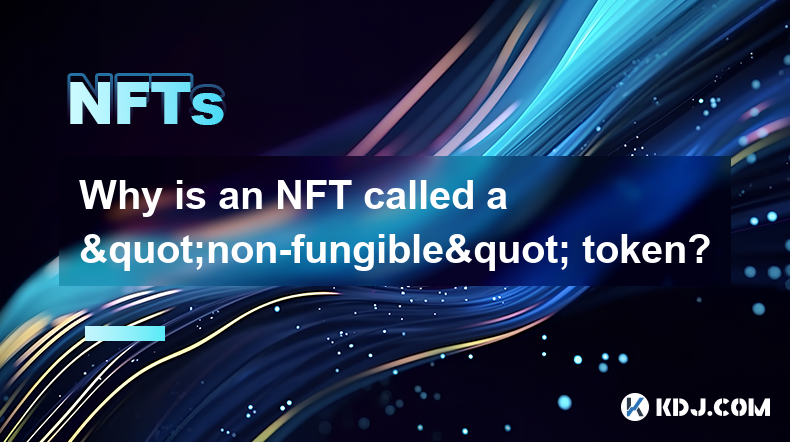
Why is an NFT called a "non-fungible" token?
Apr 11,2025 at 06:15am
An NFT, or Non-Fungible Token, is a unique digital asset that represents ownership or proof of authenticity of a specific item or piece of content, typically stored on a blockchain. The term 'non-fungible' is crucial to understanding the nature and value of these tokens. In this article, we will delve into the reasons why an NFT is called a 'non-fungibl...
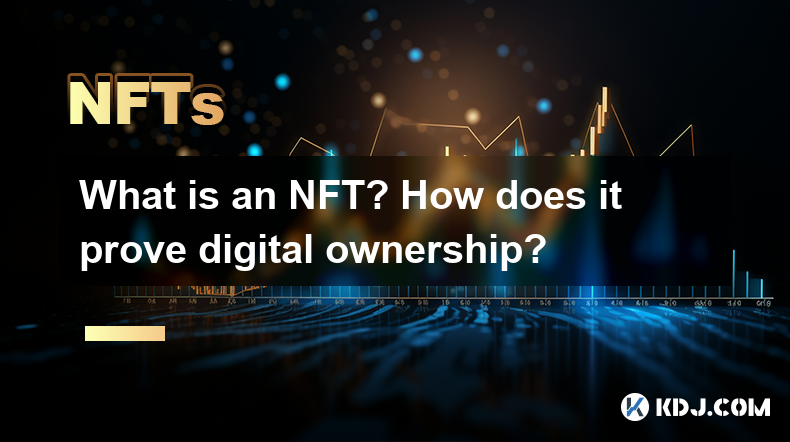
What is an NFT? How does it prove digital ownership?
Apr 09,2025 at 11:21pm
An NFT, or Non-Fungible Token, is a unique digital asset that represents ownership or proof of authenticity of a specific item or piece of content, typically stored on a blockchain. Unlike cryptocurrencies such as Bitcoin or Ethereum, which are fungible and can be exchanged on a one-to-one basis, NFTs are distinct and cannot be exchanged on a like-for-l...
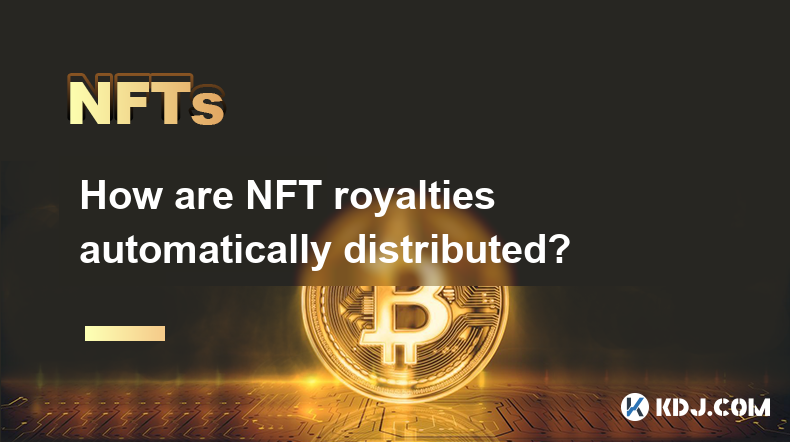
How are NFT royalties automatically distributed?
Apr 08,2025 at 08:14pm
NFTs, or Non-Fungible Tokens, have revolutionized the digital art and collectibles market by providing a way to prove ownership and authenticity of digital assets. One of the most intriguing features of NFTs is the ability to automatically distribute royalties to creators whenever their work is resold. This article will delve into the mechanisms behind ...

How is dynamic NFT implemented?
Apr 11,2025 at 04:56am
Dynamic NFTs, or dNFTs, represent a fascinating evolution in the world of non-fungible tokens. Unlike static NFTs, which remain unchanged once minted, dynamic NFTs can evolve, change, or update based on certain conditions or external data. This article will delve into the implementation of dynamic NFTs, exploring the technologies and processes involved ...

Why do some NFT projects choose the ERC-1155 standard?
Apr 08,2025 at 11:49am
The world of Non-Fungible Tokens (NFTs) has seen a significant rise in popularity and innovation, leading to the development of various token standards. Among these, the ERC-1155 standard has emerged as a versatile and efficient choice for many NFT projects. This article delves into the reasons why some NFT projects opt for the ERC-1155 standard, explor...

What is the essential difference between NFT and Bitcoin?
Apr 11,2025 at 12:14pm
The world of cryptocurrencies and digital assets has seen significant growth and diversification over the years, with Bitcoin and Non-Fungible Tokens (NFTs) being two of the most talked-about innovations. While both fall under the broader umbrella of blockchain technology, they serve different purposes and have distinct characteristics. This article wil...

Why is an NFT called a "non-fungible" token?
Apr 11,2025 at 06:15am
An NFT, or Non-Fungible Token, is a unique digital asset that represents ownership or proof of authenticity of a specific item or piece of content, typically stored on a blockchain. The term 'non-fungible' is crucial to understanding the nature and value of these tokens. In this article, we will delve into the reasons why an NFT is called a 'non-fungibl...

What is an NFT? How does it prove digital ownership?
Apr 09,2025 at 11:21pm
An NFT, or Non-Fungible Token, is a unique digital asset that represents ownership or proof of authenticity of a specific item or piece of content, typically stored on a blockchain. Unlike cryptocurrencies such as Bitcoin or Ethereum, which are fungible and can be exchanged on a one-to-one basis, NFTs are distinct and cannot be exchanged on a like-for-l...

How are NFT royalties automatically distributed?
Apr 08,2025 at 08:14pm
NFTs, or Non-Fungible Tokens, have revolutionized the digital art and collectibles market by providing a way to prove ownership and authenticity of digital assets. One of the most intriguing features of NFTs is the ability to automatically distribute royalties to creators whenever their work is resold. This article will delve into the mechanisms behind ...
See all articles





















































































